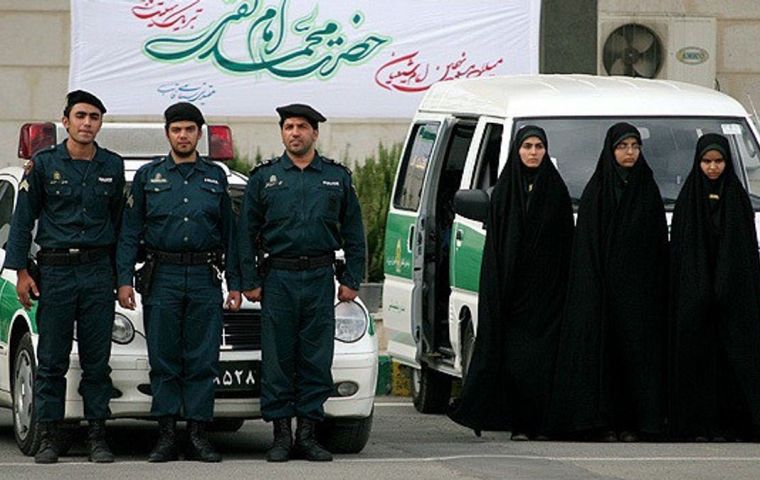MercoPress. South Atlantic News Agency
Iran's morality police dissolved
 Montazeri also announced the authorities were working on a “modification” of the law on the compulsory wearing of the Islamic veil
Montazeri also announced the authorities were working on a “modification” of the law on the compulsory wearing of the Islamic veil The Islamic Republic of Iran announced the dismantling of its morality police in the aftermath of Mahsa Amini's death, a woman who died while in custody after being arrested for not wearing her face cover properly.
Attorney general Mohamad Jafar Montazeri has announced the agency's termination after Amini's Sept. 16, which triggered nationwide protests resulting in between 200 and 400 deaths, according to the Iranian government itself and local NGOs.
“The Morality Police has been dismantled by the same people who created it”, the prosecutor said during a meeting in the city of Qom, while insisting that this organization “has nothing to do with the Iranian Judiciary. Montazeri also explained that the decision was ”a prudent solution to this problem.“
The ”Morality Police“, or Irshad Patrol, has been subject to international sanctions for the repression of the population during the protests, particularly Tehran bureau chief Ahmad Mirzaei.
Montazeri also announced that the Iranian Parliament and a special body headed by Iranian President Ebrahim Raissi were working on a ”modification“ of the law on the compulsory wearing of the Islamic veil, without specifying in which direction the text will be modified.
Amini reportedly died of a health problem while in the custody of security forces after being arrested for allegedly wearing the traditional Islamic veil incorrectly. The death of the young Kurdish-Iranian woman sparked a wave of protests that were harshly repressed by Iranian authorities.
Although the Iranian clerical establishment has acknowledged mistakes in the containment operations, it blames the bulk of these demonstrations on ”rioters and terrorists“ in the service of the opposition in exile or foreign agents.
Known as “Gasht-e Ershad”, or Islamic guidance patrol, the current morality police force was established more than 15 years ago during the administration of President Mahmoud Ahmadinejad to enforce the country’s dress code, which requires women to cover their hair and wear loose-fitting clothing. For violations, they would issue verbal warnings or detain women and take them to “re-education” centers.
After the Mahsa Amini case, demonstrators burned their head coverings and shouted anti-government slogans, while a growing number of women have not been observing hijab, particularly in Tehran's fashionable north.
President Raisi Saturday said Iran's republican and Islamic foundations were constitutionally entrenched. ”But there are methods of implementing the constitution that can be flexible,“ he said in televised comments.
The hijab headscarf became obligatory for all women in Iran in April 1983, four years after the Islamic Revolution. Iranian conservatives insist it should be compulsory, while reformists want to leave it up to individual choice.
The Oslo-based non-governmental organization Iran Human Rights Tuesday said last week that at least 448 people had been ”killed by security forces in the ongoing nationwide protests.”
Over 14,000 people, including children, had been reportedly arrested in the protest crackdown.




Top Comments
Disclaimer & comment rulesCommenting for this story is now closed.
If you have a Facebook account, become a fan and comment on our Facebook Page!